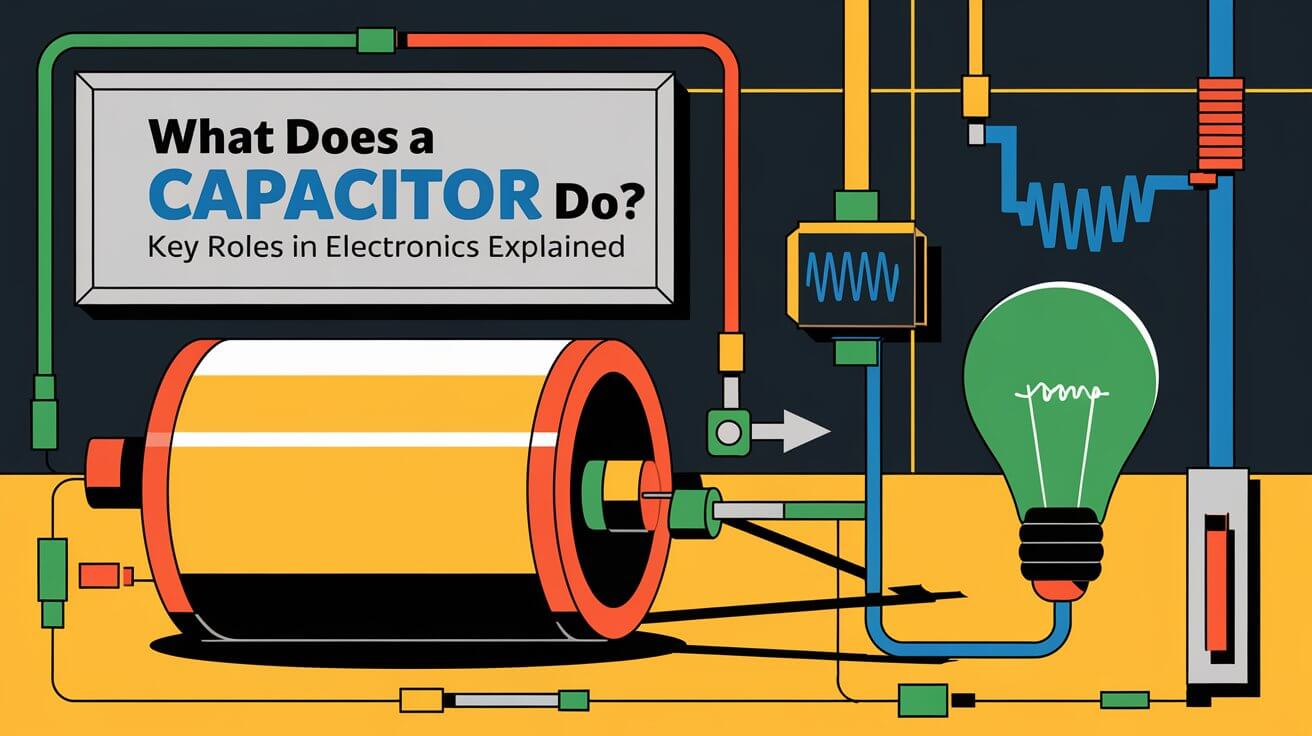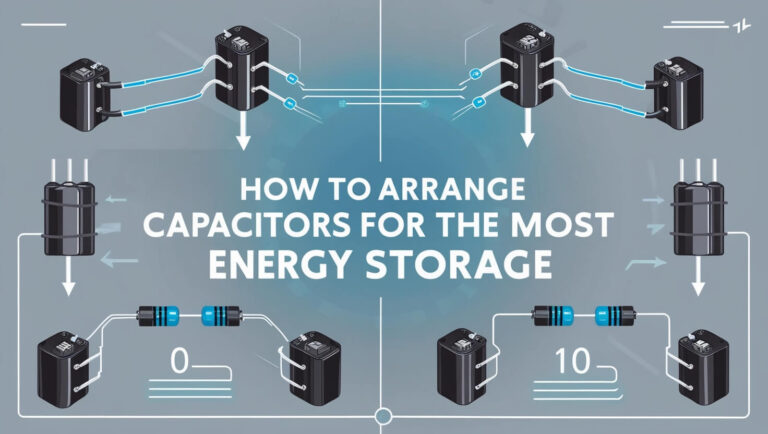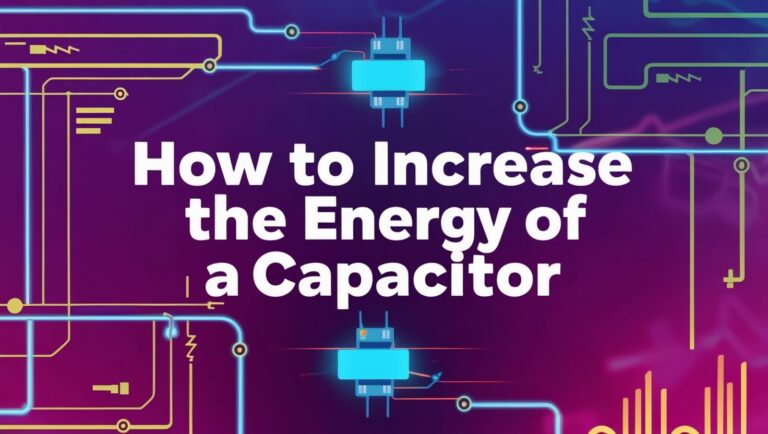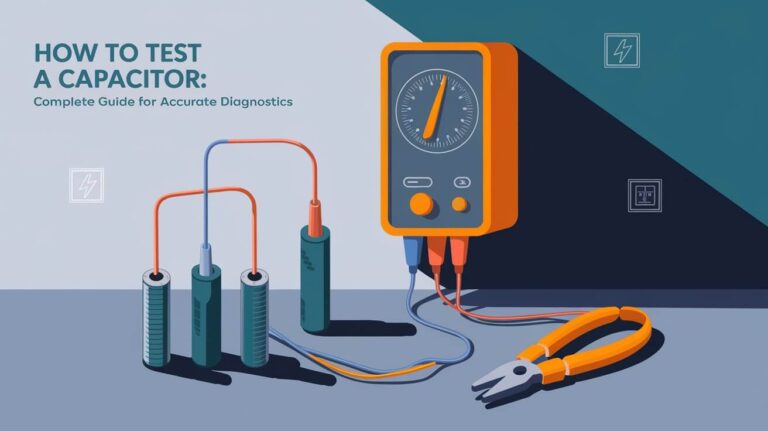What Does a Capacitor Do? Key Roles in Electronics Explained

Capacitors are fundamental components in almost every electronic device. Whether in smartphones, cars, or industrial machinery, capacitors play an essential role in regulating and storing electrical energy. This guide will break down the science and applications behind capacitors, explaining what they do, how they work, and why they are so critical in modern electronics. By the end, you’ll understand the many ways capacitors contribute to various circuits and systems.
What is a Capacitor? Basic Components and Working Principles
Capacitors are passive electronic components that store energy in an electric field, allowing them to release it when needed. Unlike batteries, which rely on chemical reactions to produce energy, capacitors use electrostatic fields. This unique ability to store and quickly release energy makes capacitors invaluable in electronics, where they regulate voltage, manage power flow, and stabilize signals.
Components of a Capacitor
A capacitor is a simple device, consisting of two conductive plates separated by an insulating material called the dielectric. Here’s a closer look at its primary parts:
- Conductive Plates: Typically made of metals like aluminum, these plates store electric charges when a voltage is applied.
- Dielectric: This insulating material sits between the plates, preventing them from coming into direct contact. Dielectrics are often made from materials like ceramic, mica, or electrolytes, and they influence the capacitor’s ability to store charge.
How Does a Capacitor Work?
Capacitors store energy by accumulating opposite charges on each plate. When connected to a power source, one plate gains a positive charge, while the other becomes negatively charged. The dielectric between the plates prevents direct current (DC) from flowing between them, so instead, an electric field is created, storing potential energy. Once the capacitor is fully charged, it can release this energy by discharging through the circuit.
Types of Capacitors and Their Applications
Capacitors come in various types, each suited to specific applications. From small ceramic capacitors in smartphones to large supercapacitors in renewable energy systems, different capacitors serve different roles in electronics.
Common Capacitor Types
- Electrolytic Capacitors: Known for their high capacitance, these are often used in power supply filters and coupling applications.
- Ceramic Capacitors: Small and reliable, ceramic capacitors are common in high-frequency circuits.
- Film Capacitors: Known for their stability, film capacitors are ideal for audio and RF circuits.
- Supercapacitors: With exceptionally high capacitance, supercapacitors are used in energy storage applications, such as in electric vehicles.
Specialized Capacitors
Certain applications require unique capacitor designs:
- Polarized vs. Non-Polarized: Polarized capacitors, like electrolytics, have a positive and negative terminal, while non-polarized capacitors can be installed in either direction.
- Trimmer Capacitors: Adjustable capacitors used to fine-tune frequency in radio and audio circuits.
Application-Based Capacitors
Capacitors are used for a range of purposes in various circuits:
- AC/DC Circuits: In AC circuits, capacitors can shift current phase and filter signals, while in DC circuits, they smooth voltage fluctuations.
- Audio Applications: Capacitors in audio circuits help filter out unwanted frequencies, enhancing sound quality.
How Does a Capacitor Store Energy? Scientific Explanation
The amount of energy a capacitor can store depends on its capacitance (measured in farads) and the voltage across its plates. Here’s how the process works.
Capacitance and Farads: How Much Energy a Capacitor Can Store
The ability of a capacitor to store charge is defined by its capacitance. Capacitance, in turn, depends on the surface area of the plates, the distance between them, and the type of dielectric. Capacitors with high capacitance can store more energy, which is why supercapacitors, with farads measured in thousands, are suited for high-energy applications.
Electric Field and Energy Storage Mechanism
When a capacitor charges, an electric field forms across the dielectric, storing potential energy. This stored energy is released when the capacitor discharges, either quickly or gradually, depending on the circuit’s resistance. The relationship between charge (Q), capacitance (C), and voltage (V) is given by the formula:Q=CVQ = CVQ=CV
This formula tells us that increasing the voltage across a capacitor also increases the stored charge, up to the capacitor’s maximum capacity.
Practical Functions of Capacitors in Electronics
Capacitors have many practical uses in electronics, from blocking unwanted signals to stabilizing power supplies.
Blocking Direct Current (DC) while Allowing Alternating Current (AC)
In audio and signal-processing circuits, capacitors block DC while allowing AC to pass, a function known as AC coupling. This is useful for separating signals from power sources or isolating different stages in a circuit.
Smoothing Power Supply in Circuits
Capacitors stabilize power supply voltages by temporarily storing charge and releasing it when there are dips in voltage. This function is crucial in devices like computers, where stable power is essential for consistent performance.
Timing and Frequency Tuning Applications
In oscillators and timing circuits, capacitors create delays by charging and discharging at specific intervals. For example, in a clock circuit, capacitors help regulate timing intervals by storing and releasing charge periodically.
Calculating and Measuring Capacitance
Accurate capacitance measurement is crucial for applications where precise energy storage is needed.
Capacitance Calculation Formula
Using the formula Q=CVQ = CVQ=CV, you can calculate the charge stored in a capacitor at a given voltage. This calculation is particularly useful for designing circuits that require specific energy levels.
Effects of Voltage and Dielectric on Capacitance
The type of dielectric and the voltage across a capacitor significantly impact its performance. Higher voltage can increase capacitance but also risk breakdown if the dielectric cannot withstand it. Choosing the right dielectric material is essential for high-performance applications.
Testing Capacitors for Performance and Safety
Testing capacitors involves measuring their capacitance, voltage rating, and leakage current. These tests help ensure the capacitor is functioning correctly and can safely store and release energy as needed.
The Role of Capacitors in AC and DC Circuits
Capacitors behave differently in AC and DC circuits, affecting their role and usage.
Behavior in AC Circuits
In AC circuits, capacitors create a phase shift between current and voltage. This property is useful in AC motors and power factor correction, where capacitors improve efficiency by adjusting phase alignment.
Behavior in DC Circuits
In DC circuits, capacitors act as open circuits once fully charged. This makes them ideal for applications where you want to maintain a steady voltage level without allowing current to flow continuously.
Factors Affecting Capacitor Performance and Longevity
Several factors influence a capacitor’s lifespan and reliability, including temperature, voltage, and dielectric type.
Temperature and Voltage Tolerance
Capacitors are sensitive to temperature; high heat can reduce their lifespan. Similarly, operating above the rated voltage can cause a capacitor to degrade or even fail.
Aging and Material Degradation
Over time, capacitors may lose their ability to hold charge due to material degradation, especially in high-temperature environments. Regular testing can help detect this issue early.
Applications of Capacitors Across Industries
Capacitors are indispensable across various industries, from consumer electronics to renewable energy systems.
Consumer Electronics
Capacitors regulate power in smartphones, computers, and home appliances, ensuring consistent performance and protecting sensitive components.
Automotive and Electric Vehicles
In electric vehicles, capacitors manage power distribution, especially during acceleration and regenerative braking, providing quick bursts of energy when needed.
Renewable Energy and Industrial Applications
Capacitors in solar and wind energy systems store power during peak generation periods, releasing it during low-generation times to balance energy supply.
Selecting the Right Capacitor for a Circuit
Choosing the right capacitor is critical for circuit performance and longevity.
Matching Capacitance and Voltage Rating to Circuit Needs
Select capacitors based on the required capacitance and voltage rating. Exceeding the voltage rating can damage the capacitor, while under-sizing capacitance may affect circuit performance.
Importance of Dielectric Material and Capacitor Type
Different applications require different dielectric materials. For example, ceramic dielectrics are common in high-frequency circuits, while electrolytic dielectrics are better suited for high-capacitance needs.
Size, Form Factor, and Cost Considerations
When choosing capacitors, consider size and form factor. Miniaturized capacitors are essential for compact devices but may cost more than larger ones.
Future Trends in Capacitor Technology
The demand for capacitors is driving innovation, leading to smaller, more efficient designs.
Advances in Supercapacitors and Ultracapacitors
Supercapacitors are improving energy storage in electric vehicles and renewable energy systems. These capacitors offer higher energy density, making them ideal for applications requiring quick energy release.
Role of Capacitors in Future Energy Storage Solutions
As renewable energy use grows, capacitors are expected to play a larger role in grid storage, where their ability to charge and discharge quickly can stabilize power fluctuations.
Miniaturization and Performance Improvements
Ongoing research aims to reduce capacitor size while improving performance. This trend is essential for consumer electronics, where space is limited but high performance is required.
Conclusion: Why Capacitors are Essential Components in Electronics
Capacitors are essential for the stable and efficient operation of electronic devices. They provide critical functions, from energy storage to signal filtering, making them invaluable in nearly every industry. With advances in technology, capacitors continue to evolve, meeting the needs of modern electronics and paving the way for innovations in renewable energy, electric vehicles, and more. Whether you’re designing circuits or simply curious, understanding what capacitors do reveals just how integral they areHere’s a comprehensive blog post on “What Does a Capacitor Do?” following your detailed instructions for SEO optimization, friendly readability, and simple language.




